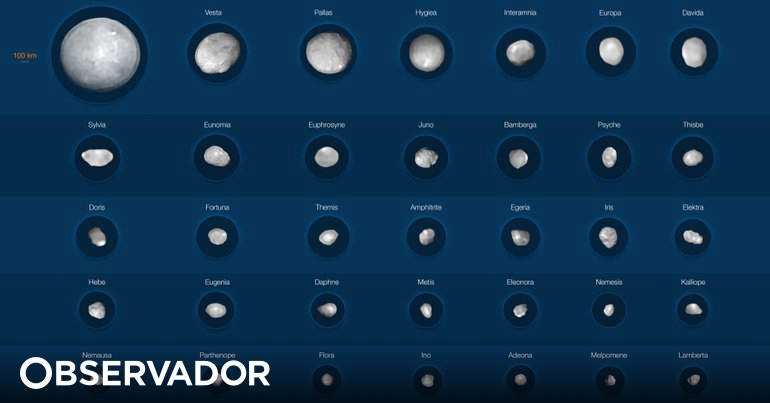The European Southern Observatory (ESO) has revealed images of the 42 largest asteroids located between the orbits of Mars and Jupiter. The images show a wide range of shapes and can help astronomers track the origin of asteroids in the Solar System.
“Until now, only three large main-belt asteroids, Ceres, Vesta and Lutetia, had been photographed in such a high level of detail, at the time they were visited by NASA and ESA space mission probes Dawn and Rosetta” , said Pierre Vernazza, from the Astrophysics Laboratory in Marseille, France, responsible for the study published this Tuesday in the scientific journal Astronomy & Astrophysics. “Our observations of the THAT provided clear images of many more targets, 42 in total,” he added.
1/ We did our own calculations and, indeed, the answer is #42 — the number of some of the biggest asteroids in our Solar System imaged by our #VLT.
Credit: @THAT /M.Kornmesser/Vernazza et al./MISTRAL algorithm (ONERA/CNRS) pic.twitter.com/1YHZg9z1cY
– THAT (@ESO) October 12, 2021
To obtain this level of sharpness, ESO used its Very Large Telescope (VLT), located in Chile, and with Spectro-Polarimetric High-contrast Exoplanet Research (SPHERE) technology, which allowed the identification of various forms of these asteroids, as per example spheres or the shape of a bone.


